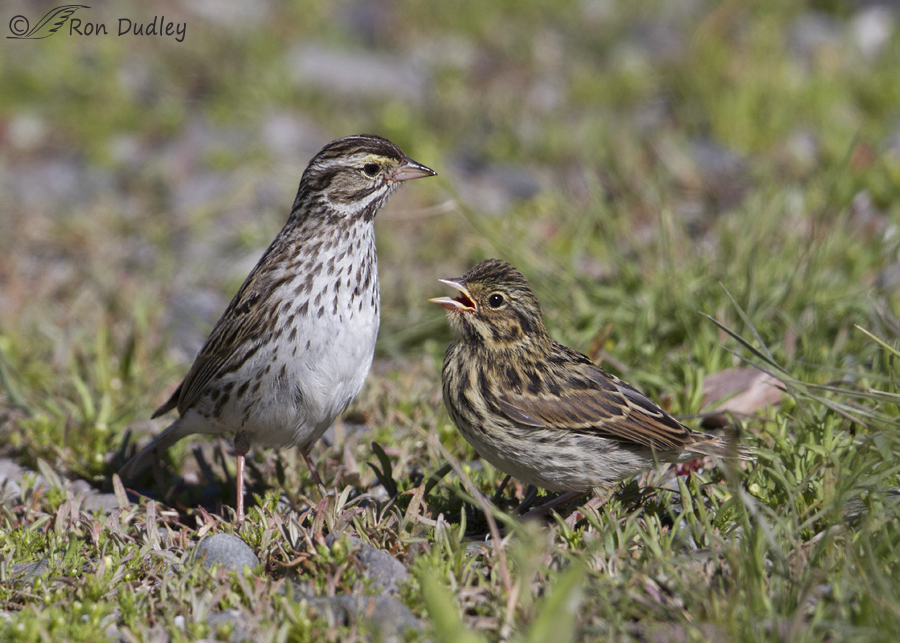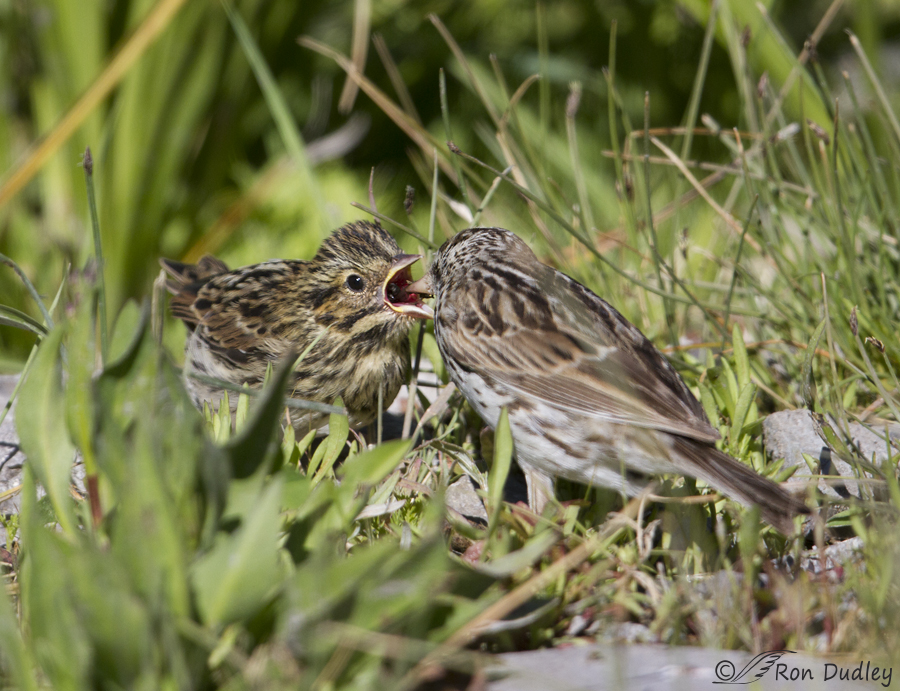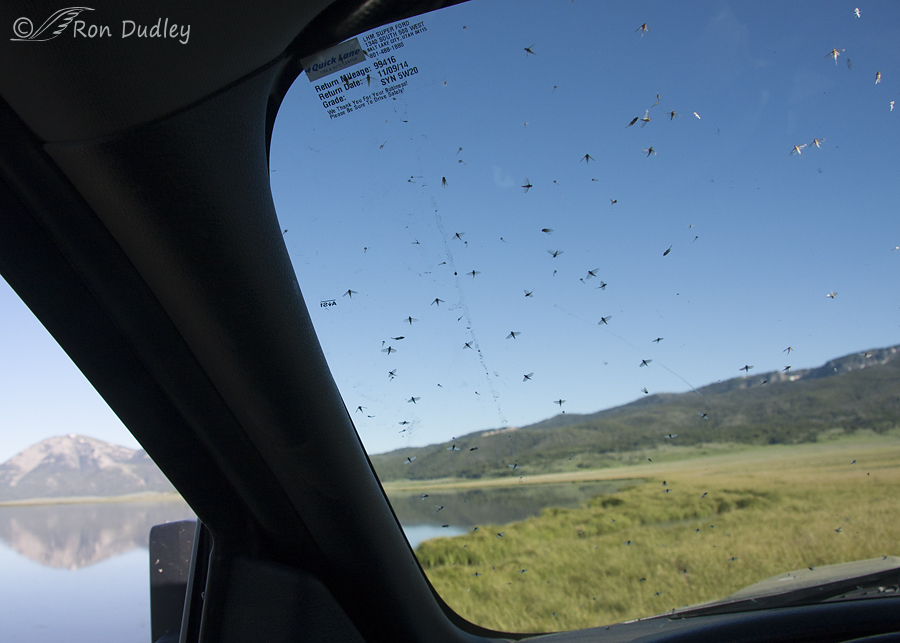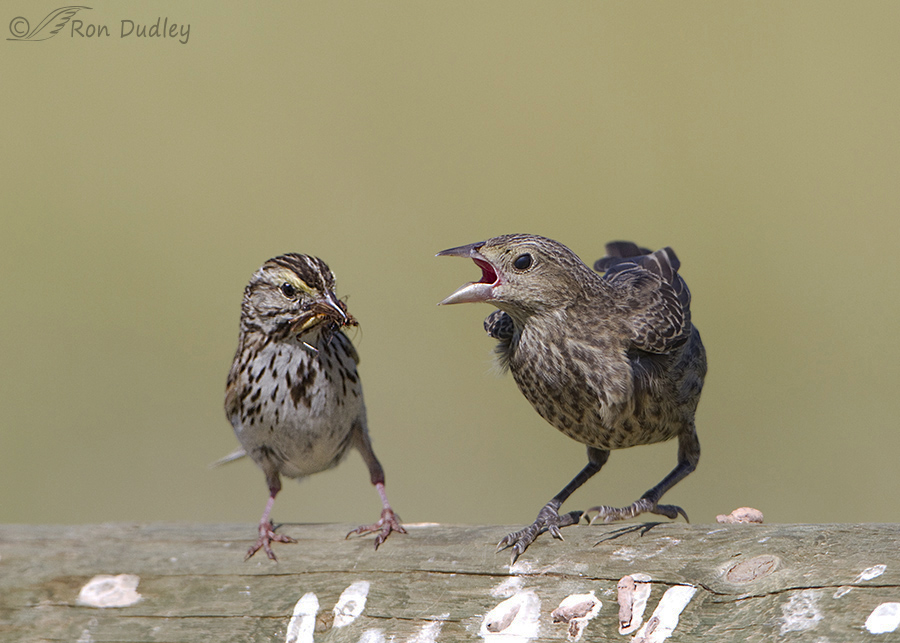During our last Montana trip we had multiple sessions over several days with a very cooperative Savannah Sparrow – “cooperative” in the sense that the bird could always be found in the same spot along the shore of Lower Red Rock Lake in Red Rock Lakes National Wildlife Refuge. Getting clear shots as the sparrow hunted in the grasses was often another story.

1/3200, f/6.3, ISO 500, Canon 7D, Canon EF500mm f/4L IS II USM +1.4 t, not baited, set up or called in
I have no clue if the bird was male or female since the sexes are alike and they both feed their young but this parent was kept busy trying to satisfy the food demands of a single fledgling. The youngster was usually hidden away in the grasses but occasionally it would come out in the “open” and beg for food as it followed its hunting parent.

1/2000, f/6.3, ISO 500, Canon 7D, Canon EF500mm f/4L IS II USM +1.4 t, not baited, set up or called in
Getting clear shots of the feeding process was a challenge and in the process I learned another photography lesson from these birds – next time I’ll use my 100-400 mm zoom lens in a situation like this rather than my 500mm prime. The birds were so quick and they were often so tight in the frame that I spent most of my time searching for them through my viewfinder. By the time I found them and almost locked focus on them they were often already gone.

Another challenge was the flying insects. Hordes of them! There were horse flies, deer flies, mosquitoes and many others. As you can see, one species (not mosquitoes) had a particular affinity for my windshield but thankfully they didn’t bite. But since we obviously have to shoot with the windows open the biting species ate us alive, even after we almost bathed in Deet. We did a lot of what I call “itchin and bitchin” while photographing the sparrow and for a long time after.
Sharp-eyed readers may notice the mileage on my pickup from the oil change sticker on the windshield. The pickup is barely over three years old and will turn over 100,000 miles this week. I estimate that over 90,000 of those miles are “bird miles”. Sometimes I think I’m just a little bit crazy…

1/1600, f/6.3, ISO 400, Canon 7D, Canon EF500mm f/4L IS II USM +1.4 t, not baited, set up or called in
Two summers ago and in the same general area I photographed this Savannah Sparrow feeding a Brown-Headed Cowbird chick. As most of my readers are aware, cowbirds parasitize other species by laying eggs in their nests. The host species hatchlings often do not survive as the much larger and more aggressive cowbird chicks get most of the food that is delivered to the nest (interestingly it’s relatively rare for cowbirds to parasitize Savannah Sparrows).
So on this last trip I was pleased to see the Savannah Sparrow feeding one of its own.
Ron


The size of your carbon footprint is offset by the immensity of your impact…via your wonderful photography and even more wonderful comments and observations….who knows the scope of this impact and the good it can do by educating and enchanting?…Far better than banding in my eyes!
The shot where the parent is stuffing the gaping maw is amazing. I think I see an ant heading down the throat!
I love the shot of the parent feeding the fledgling. And no matter how hard I try, I just can’t seem to like cowbirds, because of what happens to the host babies.
We don’t put the miles on quite as fast as you do, but we do put on a lot, traveling around the country. Glad we’re not the only ones who can run up the miles so fast. 🙂
“90,000 bird miles…” sure beats 90,000 beers! I look forward to your “daily fare”. I’m learning alot.
The beauty of your shots is amazing! THANK YOU!
Sensational behavioral shots Ron! Thanks for sharing!
Charlotte Norton
Fantastic photos Ron. I can’t believe you actually got the food in the mouth of the baby. Wow. You mentioned cowbirds. I usually have a lot of them in the Spring. I just looked and they all appear to be gone now. I still have a lot of sparrows sitting on the fence feeding their babies. I love watching them. Thanks Ron
Just tracking the small birds with my eyes is hard enough – never mind adding a camera to the equation. And the smaller birds move faster than greased lightening – and about as predictably too.
I really enjoyed seeing these charmers Ron. Thank you.
90,000 miles of excitement, of awe, of beauty, of triumph (and of frustration) is just the beginning. And a good beginning at that.
PS: The only normal people are those you don’t know very well – and I do like your form of insanity.
As always, beautiful, interesting photos! You are not alone in the high birding mileage situation. We’re all “guilty” but I do think, especially in your case, that the effect of such amazing photographs (and the stories behind them) on the attitude of folks toward birds and all of the natural world trumps any concerns about carbon footprint.
Now, these shots are fantastic! Absolutely wonderful shots of behavior and the difficulties in the field. I wish I had your patience when biting insects want a meal of blood from me. Many thanks for sharing!
Hi Ron,
Wonderful photos of a very difficult-to-observe behavior. Extraordinary! Although I am a “hawk guy”, I really appreciate the skill and patience you must have to get these images.
Thanks for sharing! Re: “birding miles” – I am currently driving my 5th Outback, each of which has served as a birdmobile. My wife often refers to herself as a “birding widow”…
Cheers,
Dick
Dick, it’s scary how many miles I’m “driving for birds” these days. I hope my pickup hangs in there for another year or so.
I often think about my carbon footprint as I burn all that gas. I usually get about 20mpg (ecoboost engine) and that’s pretty good for a full sized pickup but it’s still a lot of gas. I’m hoping that the effect of my photographs and blog on the attitude of folks toward birds and all of the natural world help to make up for it a little but that may be just rationalization.
Wonderful behavioral images, Ron! We only get to see Savannah’s during migration, so it’s really neat to see a juvenile. Lots of good “bird protein” on that windshield!
“Sometimes I think I’m just a little bit crazy…” Nope. It’s the rest of the world that has a problem.
“Nope. It’s the rest of the world that has a problem.”
I dearly hope you’re right about that, Wally!
Lovely photos and narrative. 90,000 bird miles…are there any better kind of miles?
“90,000 bird miles…are there any better kind of miles?”
Not that I know of, Sharon!